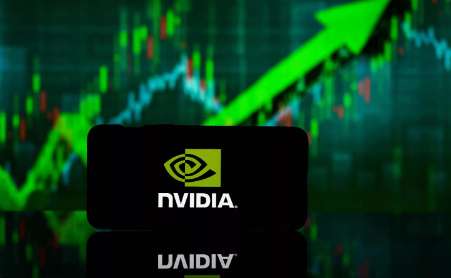GitLab's Slippery Slope: Why the Code is Red This Friday

Folks, gitlab (GTLB) took a dive this Friday, and it wasn’t just because of the usual market jitters. Let me break down why this software giant’s shares cratered—and what investors need to know before hitting “buy.”
The Immediate Culprit: Guidance Gone Awry
GitLab’s stock plunged 2.5% to $41.92 on April 11, 2025, even though the company just reported stellar Q4 earnings. They crushed estimates with $0.33 adjusted EPS (vs. $0.23) and $211.4 million in revenue (vs. $206.2M). But here’s the rub: management guided 2025 diluted EPS to $0.68–$0.72, falling short of Wall Street’s $0.80 target. Revenue projections also lagged, with $936–$942 million versus the $938.9M consensus.
Investors hate surprises, and this one was a doozy. The guidance gap sent a clear message: GitLab’s growth engine isn’t revving as fast as the market hoped.
The Elephant in the Server Room: Microsoft’s AI Threat
Let’s talk about the 800-pound gorilla in the room—Microsoft. The Redmond giant’s GitHub Copilot, an AI-driven coding tool, is eating into GitLab’s turf. GitLab’s response? Their AI-powered GitLab Ultimate (50% of ARR) and newer GitLab Duo. But here’s the problem: Copilot is bundled into Microsoft’s cloud ecosystem, making it a no-brainer for enterprises already invested in Azure.

GitLab’s CEO Bill Staples is doubling down on partnerships—like integrating GitLab Duo with Amazon Q—to stay competitive. But this battle isn’t won overnight.
The Bigger Picture: A Year of Struggles
GitLab’s April 11 drop wasn’t an isolated event. The stock is down 27.1% year-to-date, underperforming both the tech sector (-21%) and internet software peers (-18.3%). Technical indicators scream trouble too: it’s trading below its 50-day ($56.59) and 200-day ($58.46) moving averages, a “death cross” for bulls.
And then there’s the valuation. GitLab’s P/E ratio of -131.00 isn’t a typo—it’s negative because the company’s trailing earnings are in the red. Analysts still cling to a $75 price target, but until profitability materializes, this stock is a leap of faith.
Institutional Investors are Voting with Their Feet
Big money is fleeing. Trexquant Investment LP slashed its stake by 88.4% in Q4 2024, and institutional holdings now account for 95.04% of shares. That’s a red flag. When insiders or top funds bail, it’s a sign of doubt—even if the “Moderate Buy” consensus persists.
The Bottom Line: Caution, but Not a Sell Signal (Yet)
GitLab’s stock is a mess of contradictions. On one hand, it’s innovating with AI and locking in partnerships like AWS and Zscaler. CEO Staples’ leadership shakeup could stabilize growth. But on the other, competition, valuation, and guidance misses are weighing it down.
Here’s the takeaway: This isn’t a “buy and hold” moment. Wait for a clearer path to profitability or a catalyst like a Copilot-killer product. For now, GitLab’s code is red—and investors should tread carefully.

Final Word:
GitLab’s decline isn’t just about a bad quarter—it’s a symptom of a tech sector in flux. Until they prove they can outpace Microsoft and turn those negative earnings positive, this stock is a high-risk play. Stay patient, and only dip in if you’re ready to ride the volatility.
This analysis blends immediate catalysts with deeper structural issues, painting GitLab as a company with potential but urgent challenges. The verdict? Proceed with caution—unless the code turns green.










